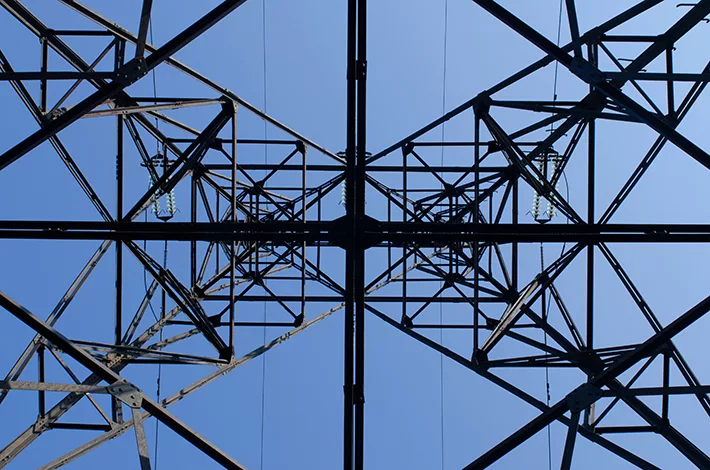Introduction to Energy Market Deregulation
Energy market deregulation is a significant factor that influences electricity prices in various regions. The system allows multiple power companies to set rates, creating a competitive marketplace. This setup can lead to various electricity plans and pricing structures, offering consumers more choices and adding complexity. Understanding market dynamics is crucial for those who need clarification on the difference between 1000 kWh and 2000 kWh plans.
Consumers are no longer restricted to buying electricity from a single provider in a deregulated market. Instead, they can shop around for the best deals, potentially leading to cost savings. However, this freedom comes with its share of responsibilities. Customers must be vigilant about market shifts, rate changes, and contract stipulations to benefit from the competitive environment. By delving into the nuances of deregulated markets, individuals can better navigate their electricity options and take advantage of the benefits while minimizing the downsides.
Types Of Electricity Rates
Understanding the different types of electricity rates can empower consumers to make better decisions. Common rate structures include fixed rates, variable rates, and time-of-use rates.
- Fixed Rates: These rates remain constant throughout the contract period, usually lasting from 6 months to several years. Fixed rates provide stability and predictability, which is particularly beneficial for budgeting. Consumers who prefer a consistent monthly bill often opt for this rate.
- Variable Rates: These rates fluctuate based on market conditions. While variable rates can offer lower initial costs, they also pose the risk of sudden price spikes, particularly during high-demand periods or energy crises. This option may suit risk-takers who closely monitor market trends and are willing to switch providers if rates become unfavorable.
- Time-of-Use Rates: Prices vary depending on the time of day and the day of the week. Peak hours generally see higher rates, while off-peak hours are cheaper. Time-of-use rates incentivize consumers to reduce energy usage during peak demand periods, contributing to a more balanced and efficient energy grid.
Knowing these different rate structures can help consumers select the plan that best fits their lifestyle and financial situation. It’s essential to read the fine print and understand each plan’s pros and cons before committing.
Pros And Cons Of Deregulated Markets
Deregulated energy markets offer both advantages and challenges. Understanding these can help consumers make the most of their options.
- Pros: Competitive pricing, more consumer options, and potential incentives for green energy. Deregulation encourages power companies to innovate and offer unique plans, such as renewable energy packages or free nights and weekends, to attract customers.
- The cons are market complexities, potential price spikes, and the need for consumers to stay informed. Deregulated markets can be confusing, with numerous providers offering various plans. Additionally, the lack of regulation can sometimes lead to misleading advertising or hidden fees.
For example, states like Texas have seen diverse impacts from energy deregulation, with cost savings and occasional market volatility. During extreme weather events, the lack of regulation has sometimes resulted in exorbitant prices, catching consumers off guard. However, in more stable periods, deregulated markets often offer lower rates than regulated ones.
Historical Context Of Deregulation
The deregulation of electricity markets began in earnest in the 1990s, as states sought to introduce competition and lower prices. Over the years, these changes have led to mixed results, with some success stories and challenges.
These efforts aimed to create a more dynamic and efficient energy market, although the impact has varied by region. Some states have seen significant improvements in service quality and price reduction, while others have faced growing pains such as market manipulation and instability.
Initially, deregulation was met with enthusiasm as consumers anticipated lower energy costs and better service. However, the transition period brought unforeseen issues, including the infamous California electricity crisis of 2000-2001, which highlighted the potential pitfalls of deregulated markets. Over time, legislation and oversight have evolved to address these challenges, but the debate over the benefits and drawbacks of deregulated energy markets continues.
Consumer Tips For Navigating The Market
Navigating a deregulated energy market can be daunting. Here are some tips to help consumers:
- Compare multiple electricity plans to find the best rates. Use online comparison tools to simplify this process. These tools can provide a side-by-side analysis of different plans, highlighting key features and costs.
- Read the fine print of any contract, paying attention to terms and conditions. This includes early termination fees, rate changes after the introductory period, and any additional charges that may apply.
- Monitor market trends to switch plans if better rates become available. Staying informed can help you capitalize on market dips or promotions offered by providers looking to attract new customers.
- Consider renewable energy options, which offer long-term savings. Many deregulated markets feature plans that include a percentage of power from renewable sources, providing an eco-friendly choice that can lead to financial incentives or rebates.
Consumers can refer to resources that provide comprehensive guides and comparison tools for more detailed advice. These platforms can be invaluable for novices and experienced energy market navigators, helping consumers make the most informed decisions possible.
Research And Data Insights
Data and research offer valuable insights into how deregulated markets operate. Studies have shown that while deregulation can lead to competitive pricing, it can also introduce uncertainties. A deeper understanding of these dynamics can help consumers and policymakers navigate the complexities of deregulated energy markets.
A report outlines the complex dynamics of deregulated markets and their impact on pricing and market stability. According to the report, weather conditions, fuel prices, and grid stability play significant roles in determining electricity rates in deregulated environments. By analyzing these variables, researchers can make informed predictions and provide recommendations for consumers and regulators.
Furthermore, historical data from various deregulated markets offers information on price trends, consumer behavior, and market responses to regulatory changes. This data is crucial for understanding the long-term implications of energy market deregulation and designing policies that maximize benefits while minimizing risks.
Final Thoughts
Energy market deregulation plays a crucial role in shaping electricity prices. While it brings opportunities for competitive pricing and consumer choice, it also introduces complexities that require informed decision-making. Individuals can better navigate this ever-evolving landscape by understanding the types of electricity rates, the pros and cons of deregulated markets, and leveraging consumer tips.
In conclusion, staying informed and proactive is the key to benefiting from a deregulated energy market. With the proper knowledge and tools, consumers can take full advantage of the opportunities presented by deregulation, securing better rates and more tailored and innovative energy solutions.
Keep an eye for more latest news & updates on Forbes Zine!




